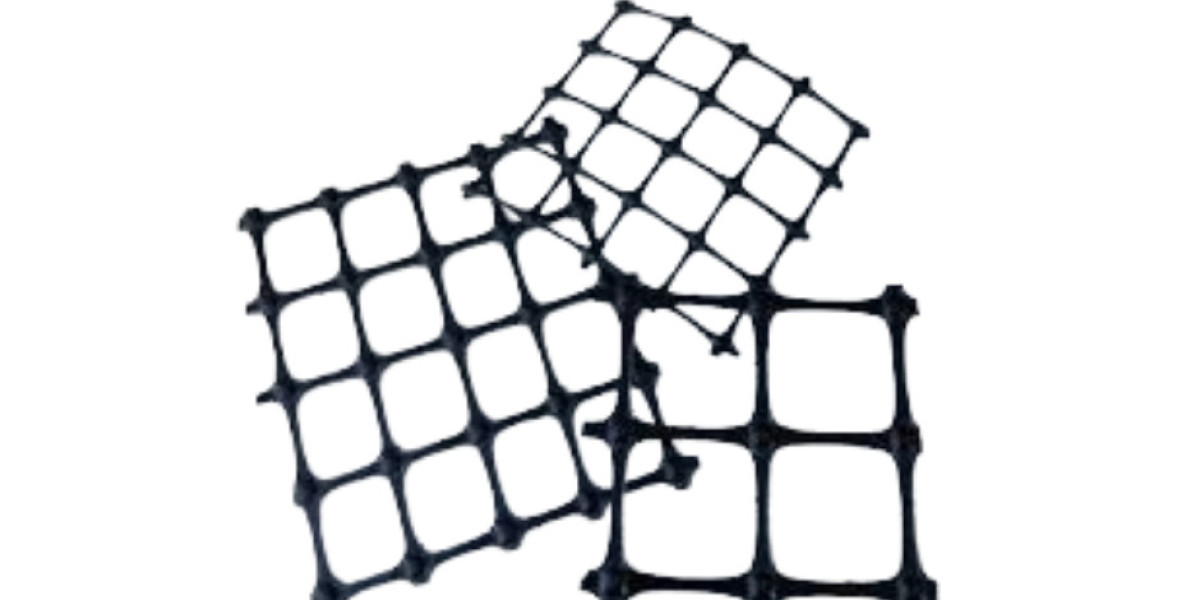Introduction
In the field of civil engineering and construction, ensuring the stability and durability of structures is crucial. Biaxial geogrids, a type of geosynthetic product, have become indispensable in achieving these goals. These advanced materials offer exceptional soil reinforcement, load distribution, and erosion control, making them a vital component in various infrastructure projects. Singhal Industries, a leader in flexible packaging solutions, also excels in producing top-quality biaxial geogrids. This comprehensive guide delves into the world of biaxial geogrids, exploring their benefits, applications, and the unparalleled expertise of Singhal Industries.
Understanding Biaxial Geogrids
Biaxial geogrids are synthetic materials made from polymers such as polypropylene (PP) or high-density polyethylene (HDPE). They are characterized by a grid-like structure with apertures that facilitate the interlocking of soil and aggregate materials. Designed to provide equal strength in both longitudinal and transverse directions, biaxial geogrids are ideal for soil stabilization, reinforcement, and load distribution applications.
Key Benefits of Biaxial Geogrids
Superior Load Distribution: Biaxial geogrids distribute loads more evenly across a wider area, reducing stress on the underlying soil and preventing deformation.
Enhanced Soil Reinforcement: The interlocking mechanism of biaxial geogrids increases the bearing capacity and stability of the soil.
Effective Erosion Control: The mesh structure of biaxial geogrids holds soil particles in place, preventing erosion and promoting vegetation growth.
Cost-Effective Solutions: The use of biaxial geogrids can lower the need for additional construction materials, reduce maintenance costs, and extend the lifespan of infrastructure.
Versatile Applications: Biaxial geogrids can be utilized in a variety of projects, including road construction, retaining walls, embankments, and more.
Applications of Biaxial Geogrids
1. Road Construction
In road construction, biaxial geogrids are essential for reinforcing the base and sub-base layers. By improving load distribution, they help reduce the thickness of pavement layers and prevent rutting and cracking. This leads to more durable and long-lasting roads with lower maintenance costs.
2. Retaining Walls
Biaxial geogrids provide crucial support and stability to retaining walls. By reinforcing the soil behind the wall, they prevent soil erosion and slippage, ensuring the wall's structural integrity even under challenging conditions.
3. Slope and Embankment Stabilization
On slopes and embankments, biaxial geogrids control erosion by stabilizing the soil and promoting vegetation growth. This is particularly useful in preventing landslides and soil erosion in areas with steep gradients or unstable soils.
4. Railways and Airports
In railway and airport construction, biaxial geogrids are used to stabilize the ballast and sub-ballast layers. This enhances the load-bearing capacity of the tracks and runways, ensuring safer and more reliable transportation infrastructure.
5. Erosion Control in Coastal and Riverbank AreasBiaxial geogrids are effective in controlling erosion in coastal and riverbank areas. They stabilize the soil and prevent erosion caused by water flow, protecting the integrity of the shoreline or riverbank.
Singhal Industries: Your Trusted Partner for Biaxial Geogrid Solutions
As a leading manufacturer of flexible packaging products, Singhal Industries extends its expertise to the production of high-quality PP biaxial geogrid. With a focus on innovation, sustainability, and customer satisfaction, Singhal Industries provides biaxial geogrid solutions that meet the highest standards of performance and reliability.
Why Choose Singhal Industries for Biaxial Geogrids?
1. Quality Assurance
Singhal Industries adheres to stringent quality control measures at every stage of the manufacturing process. From raw material selection to final product testing, the company ensures that each biaxial geogrid meets the highest standards of strength, durability, and performance.
2. Customized Solutions
Recognizing that each project has unique requirements, Singhal Industries offers customized biaxial geogrid solutions tailored to the specific needs of its clients. This ensures optimal performance and cost-effectiveness for every application.
3. Technical Expertise
Singhal Industries is backed by a team of experienced engineers and technical specialists who provide comprehensive support and guidance to customers. From product selection and design to installation and maintenance, the company ensures that clients achieve the best possible results with their biaxial geogrid applications.
4. Commitment to Sustainability
Singhal Industries is dedicated to sustainability and environmental responsibility. The company's Biaxial polypropylene geogrid are manufactured using eco-friendly processes and materials, contributing to sustainable construction practices and reducing environmental impact.
Installation and Maintenance of Biaxial Geogrids
Installation
The installation of biaxial geogrids involves several key steps:
- Site Preparation: Ensure the surface is adequately prepared, compacted, and leveled to provide a solid foundation for the geogrid.
- Laying the Geogrid: Unroll the biaxial geogrid and place it on the prepared surface, ensuring it is aligned correctly and free of wrinkles or folds.
- Anchoring: Secure the geogrid in place using stakes, pins, or other anchoring methods to prevent movement during the placement of fill material.
- Filling and Compaction: Place the fill material (such as soil, gravel, or aggregate) over the geogrid and compact it to achieve the desired level of stabilization and reinforcement.
Maintenance
Polyester biaxial geogrid require minimal maintenance. Regular inspections should be conducted to ensure that the geogrids remain intact and free of damage. In case of any displacement or wear, appropriate repairs should be carried out promptly to maintain the effectiveness of the geogrid system.
Case Studies: Successful Biaxial Geogrid Applications by Singhal Industries
Road Improvement Project
In a major road improvement project, Singhal Industries supplied biaxial geogrids to reinforce the base layers. The use of biaxial geogrids resulted in enhanced load distribution, reduced pavement thickness, and improved durability, leading to significant cost savings in construction and long-term maintenance.
Slope Stabilization in a Hilly Region
A hilly region prone to landslides and soil erosion required effective slope stabilization. Singhal Industries provided biaxial geogrids to reinforce the slopes, prevent erosion, and promote vegetation growth. The project successfully mitigated landslide risks and improved the overall stability of the area.
Airport Runway ReinforcementAn airport faced challenges with runway stability and load-bearing capacity. Singhal Industries supplied biaxial geogrids to stabilize the sub-base layers, ensuring a safer and more reliable runway. The reinforced runway now supports heavier loads and experiences less wear and tear, resulting in lower maintenance costs.
Conclusion
Biaxial geogrids are revolutionizing the construction and landscaping industries by providing innovative solutions for soil reinforcement, load distribution, and erosion control. As a leading manufacturer of flexible packaging products, Singhal Industries brings its expertise and commitment to quality to the forefront, offering high-performance biaxial geogrids that meet the diverse needs of modern infrastructure projects. With Singhal Industries as your trusted partner, you can harness the full potential of biaxial geogrids and ensure the success of your construction and landscaping endeavors. Choose Singhal Industries for reliable, sustainable, and efficient biaxial geogrid solutions that build a stronger and more resilient future.
FAQS








